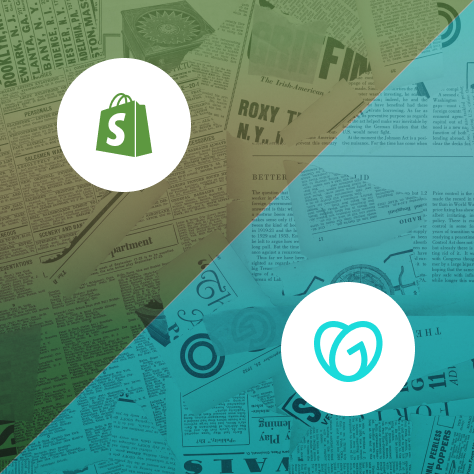What Is the Post-Purchase Experience?
The post-purchase experience refers to everything a customer encounters after placing an order. This includes confirmation emails, shipping updates, delivery, unboxing, follow-up communication, and any support interactions.
It begins the moment the transaction is complete and continues through the customer’s use of the product. In ecommerce, it often includes tracking information, estimated delivery windows, and post-purchase offers.
For Shopify brands, the post-purchase experience is shaped by both the storefront and the apps or tools used behind the scenes. Everything from checkout customizations to thank-you pages contributes to this experience. Personalized thank-you page recommendations can lift Average Order Value by 32%, making post-purchase pages underutilized revenue drivers.
For Shopify brands, the post-purchase experience is shaped by both the storefront and the apps or tools used behind the scenes. Everything from checkout customizations to thank-you pages contributes to this experience.
It also plays a measurable role in revenue. High-performing post-purchase flows can increase average order value (AOV) through upsells and cross-sells, and improve customer lifetime value (LTV) through repeat engagement.
In short, the post-purchase experience is not a single moment—it’s a series of touchpoints that shape how a customer feels about your brand after the sale.

7 Strategies to Improve the Post-Purchase Experience
The post-purchase experience can be broken into specific actions that help Shopify brands retain customers, reduce support costs, and increase repeat orders. These seven strategies focus on simple, reliable ways to improve how customers feel after they buy.
1. Provide Clear Shipping Updates
Sending real-time tracking updates keeps customers informed about where their order is and when it will arrive. This reduces WISMO (“Where is my order?”) tickets, which are one of the most common support requests in ecommerce.
Automated notifications via email or SMS can give customers a predictable timeline, increasing trust and reducing frustration. Some brands also include estimated delivery windows on the thank-you page to set expectations early.
2. Offer Hassle-Free Returns and Exchanges
A return or exchange process that is fast, transparent, and requires minimal effort from the customer often leads to higher satisfaction—even when the product didn’t work out.
Offering printable return labels, clear instructions, and automated return portals reduces the need for back-and-forth with support. For brands with multiple product variants, enabling easy exchanges instead of refunds can retain revenue while keeping the customer engaged.
3. Use Thank You Pages to Boost Engagement
The thank-you page is one of the most overlooked parts of the post-purchase flow. It captures attention at a moment when the customer is most engaged.
This space can be used to recommend complementary products, offer limited-time discounts, or introduce brand content like tutorials or stories. Since the customer has already converted, upsells here do not interrupt the shopping journey.
4. Send Personalized Follow-Up Emails and SMS
Follow-up messages that reference the specific product ordered, the customer’s name, or their purchase history feel more relevant than generic promotions. These can include usage tips, product care instructions, or related product suggestions.
Timing is also important. Messages sent a few days after delivery—once the customer has had time to use the product—can prompt repeat purchases or reinforce the brand experience.
5. Ask for Reviews and Feedback
Requesting a review after delivery gives customers space to share their experience and helps merchants gather social proof. Simple review requests can be sent via email, SMS, or embedded in the thank-you page.
Short, optional surveys can also give insight into product quality, shipping speed, or the checkout process. These inputs can be used to improve the store or identify patterns in customer needs.
6. Launch Loyalty and Referral Rewards
Offering points, discounts, or perks for repeat purchases can turn one-time buyers into long-term customers. Referral rewards—such as a discount for both the referrer and the new customer—can also help bring in new traffic without relying on paid ads.
These programs can be introduced in follow-up emails, account dashboards, or the thank-you page. Simpler programs with clear rules are more likely to be used.
7. Provide Proactive Post-Purchase Support
Some customers have questions before they reach out for help. Sending emails that answer common questions, or linking to FAQs and setup guides, can prevent frustration.
This might include care instructions, assembly videos, or tips for getting started. By anticipating needs, brands reduce the volume of support tickets and increase the chance of a successful product experience.

Tracking Post-Purchase Success
Post-purchase performance can be measured using a small set of metrics tied to customer behavior and store revenue.
Repeat purchase rate tracks how often customers return to buy again. It is calculated by dividing the number of customers who made more than one purchase by the total number of customers within a given period. For Shopify brands, a 20–30% repeat rate within 90 days is generally considered healthy, depending on product type and price point.
Average order value (AOV) is the average amount spent per order. It is calculated by dividing total revenue by total number of orders. Tracking AOV after a customer’s first purchase can help identify whether post-purchase offers or loyalty programs are influencing upsell behavior.
Satisfaction scores can be collected using post-purchase surveys. These include Net Promoter Score (NPS), Customer Satisfaction Score (CSAT), or individual product ratings. Timing matters—sending these surveys 5–10 days after delivery tends to yield more accurate responses.
Other metrics include return rate, customer support volume (especially WISMO tickets), and referral activity. Each of these can be tracked using Shopify data, survey tools, and post-purchase apps.
Keep the Momentum Going
Post-purchase strategies are operational workflows that directly impact how customers interact with your brand after checkout. These workflows include communication, support, personalization, and incentives. Each element contributes to customer retention, repeat purchases, and reduced support load.
Shipping updates lower ticket volume. Returns and exchanges affect reorder rate. Thank-you pages influence AOV. Follow-up messages control timing and relevance. Feedback generates data. Loyalty and referral programs influence acquisition costs. Proactive support affects satisfaction scores.
These are not isolated tactics. They are connected systems that function best when integrated into your storefront’s design and backend logic. The more seamless the system, the more consistent the customer experience.
To explore how this can be implemented using our storefront framework and app-level tools, book a demo with our team
FAQs About the Post-Purchase Experience
What is considered post-purchase?
Post-purchase refers to the period that begins immediately after a customer completes checkout. It includes order confirmation, shipping and delivery, product usage, follow-up communication, returns or exchanges, and any support interactions related to that order.
How can post-purchase strategies boost revenue?
Post-purchase strategies can increase revenue by encouraging repeat purchases and reducing customer churn. Customers who receive consistent communication, support, and personalized offers after their initial purchase are more likely to buy again and stay engaged with the brand long-term.
What are good ways to gather feedback after the sale?
Feedback can be collected using short post-delivery surveys embedded in email or SMS campaigns. In-app prompts within customer accounts, order history pages, or mobile apps can also be used. Timing the request 5 to 10 days after delivery often results in higher response quality.






-min.webp)




.webp)



















.svg)


.svg)











.png)

%201.png)



.svg)
.svg)
